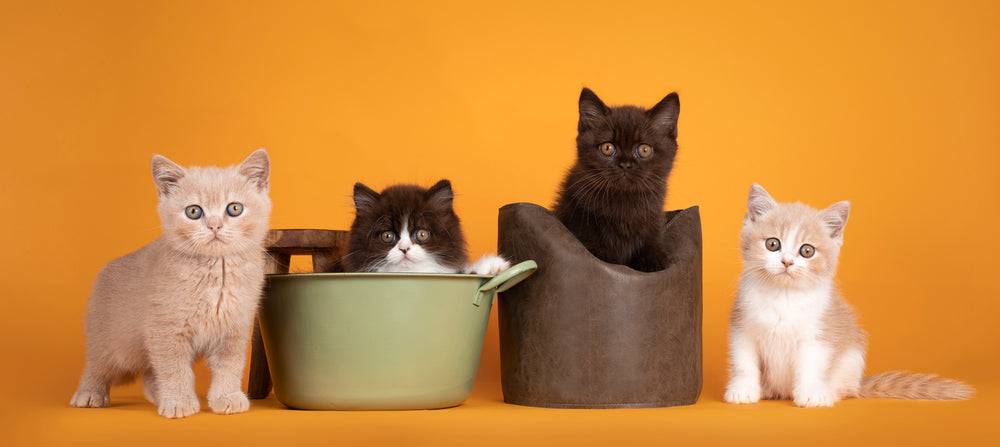Whisker-Licking Good: The Purrfect Perks of Cat Wet Food
Glimmer PawsWelcome back to The Pet Leaks, Pet Planet’s most pawsitively enlightening blog! Today, we’re diving whisker-first into the moist, meaty world of cat wet food. Grab your cat’s favorite napkin and get ready for a hilarious yet insightful exploration of why wet food is the cat’s meow.
The Gravy Train: Why Wet Food Wins
Picture this: your cat, with all the grace of a ballet dancer and the appetite of a ravenous lion, eagerly awaiting their meal. What do you serve? Dry, boring kibble or a luscious, gravy-drenched delight? If you chose the latter, you’re already on the right track. But beyond the taste factor, why should you opt for wet food? Let’s break it down.
Hydration Station: Wet Food Keeps Kitty Quenched
Cats are notorious for being poor water drinkers. Unlike their canine counterparts, cats descended from desert-dwelling ancestors who got most of their hydration from their prey. Modern house cats might not be chasing down desert rodents, but their hydration needs haven’t changed.
Enter wet food. Packed with moisture, wet food helps keep your cat hydrated. It’s like tricking your cat into drinking more water without them even realizing it. This can be particularly beneficial for cats prone to urinary tract issues or kidney problems. Think of it as a secret hydration mission, where the tasty morsels are the unsuspecting heroes.
Weight Watchers: Portion Control and Satisfaction
For the chonky cats among us, wet food can be a game-changer. It’s generally more filling due to its higher moisture content, which means your cat can enjoy a satisfying meal without consuming too many calories. Plus, wet food often comes in portion-controlled servings, making it easier for you to manage your cat’s diet and keep them from turning into furry little blimps.
Dental Dynamics: A Surprising Twist
While kibble enthusiasts argue that dry food helps clean teeth, the truth is a bit murkier. Most cats don’t chew their kibble enough for it to have a significant impact on their dental health. In fact, wet food’s soft texture is easier for cats to eat, especially for seniors or those with dental issues.
Of course, regular dental check-ups and proper oral hygiene practices (yes, brushing your cat’s teeth) are essential. But don’t let the fear of dental problems steer you away from the benefits of wet food.
The Palatability Punch: Taste and Temptation
Cats can be finicky eaters, and by finicky, we mean they could win an Oscar for their dramatic food rejections. Wet food, with its rich aroma and savory taste, is often more palatable to cats than dry food. If your cat is turning their nose up at mealtime, offering a variety of wet food flavors might just reignite their culinary enthusiasm.
Protein Powerhouse: Meeting Nutritional Needs
Cats are obligate carnivores, which means they need a diet rich in animal-based proteins. Wet food typically has a higher protein content than dry food, providing essential amino acids like taurine, which are crucial for your cat’s health. From maintaining a shiny coat to supporting heart health, these nutrients are vital.
Imagine your cat strutting around like the king or queen they are, with a glossy coat and a swagger that screams, “I’m well-fed and I know it.” That’s the power of a protein-packed diet.
Senior Support: Gentle on Aging Systems
As cats age, their dietary needs change. Senior cats often have trouble chewing kibble or may lose interest in eating altogether. Wet food’s soft texture and enticing smell can make mealtime more enjoyable and manageable for older cats, ensuring they get the nutrition they need to stay spry and sassy in their golden years.
The Great Debate: Wet vs. Dry – Why Not Both?
In the grand debate of wet vs. dry food, why not embrace the best of both worlds? Many pet parents opt for a mixed feeding approach, combining the convenience of dry food with the benefits of wet food. This strategy can provide variety, balanced nutrition, and help with portion control. Plus, it adds a bit of excitement to your cat’s daily routine. Who doesn’t love a surprise buffet?
Allergy Aid: Managing Food Sensitivities
Cats, like humans, can suffer from food allergies or sensitivities. Wet food, with its limited ingredient options, can be easier to manage and monitor for potential allergens. This can help you identify what works best for your cat’s delicate tummy, ensuring they stay comfortable and happy.
Eco-Friendly Options: Sustainable Choices
For the environmentally conscious cat parent, there are wet food options that prioritize sustainability. Brands offering responsibly sourced ingredients, recyclable packaging, and eco-friendly practices are on the rise. By choosing these options, you’re not only benefiting your cat’s health but also making a positive impact on the planet. It’s a win-win for you, your feline friend, and Mother Earth.
Convenience and Customization: Meal Variety
Wet food comes in an array of flavors and textures, providing endless customization options for your cat’s palate. Whether your feline prefers pate, chunks in gravy, or shredded morsels, there’s something to satisfy every discerning taste. Plus, individual cans and pouches make it easy to serve fresh meals each time, reducing waste and ensuring your cat always gets the best.
The Conclusion: Meow-tastic Meals Await
So there you have it—a whisker-licking rundown of the benefits of wet food for your feline companion. From hydration and weight management to protein power and palatability, wet food offers a plethora of perks that can keep your cat healthy, happy, and well-fed. Plus, it makes mealtime a joy for even the pickiest of eaters.
Next time you’re perusing the pet food aisle, give those cans of wet food a second glance. Your cat might just thank you with a contented purr and an extra snuggle. After all, a well-fed cat is a happy cat, and a happy cat makes for a harmonious home.
Stay tuned to The Pet Leaks for more tail-wagging tales and purr-fectly delightful pet tips.







